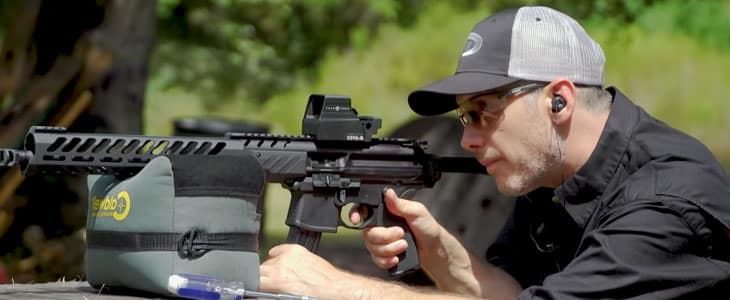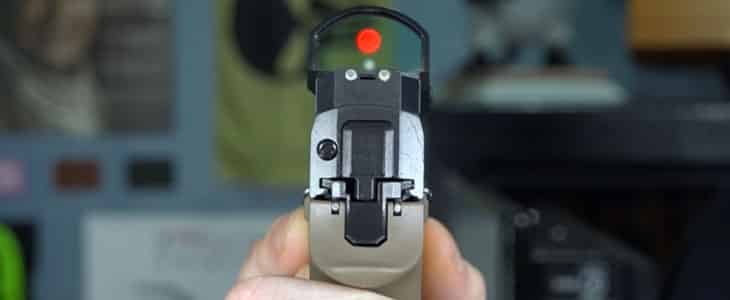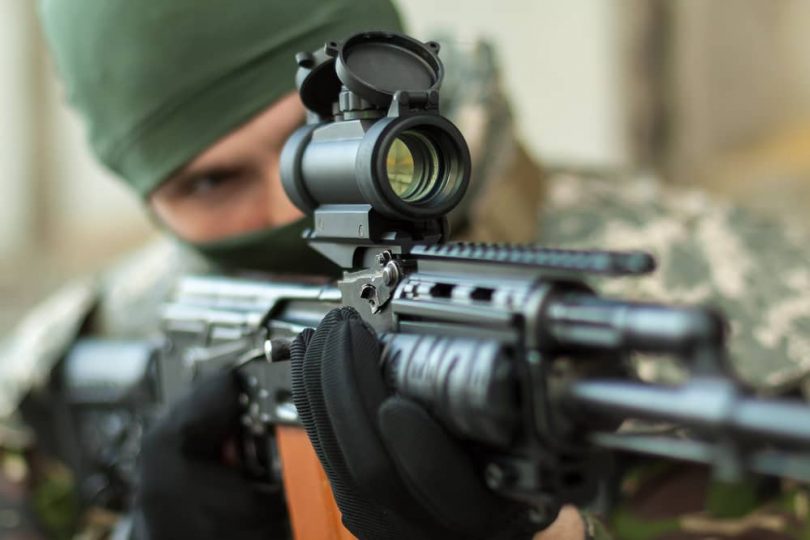When you need an affordable, compact, and durable rifle sight, the very first thing that comes into your mind is most probably a reflex sight, right?
Not only reflex sights are cheaper than prisms, but they are also more user-friendly. Besides, you’ll love the comfort it gives you not having to depend on batteries.
But, none of these advantages can be yours if you don’t know how to use a reflex sight.
That’s what we’re discussing today. Let’s dive deep into the process of using a reflex sight so you can get the maximum output from your sight.
How to Use a Reflex Sight Like an Expert: A Quick Guide
Reflex sights are also known as exposed reflex sights. That’s because they don’t feature a tube, which gives them their distinct look.
With a reflex dot, you’ll be able to see your aiming point on a clear small-sized window. Reflex sights also provide a much better field of view than a red dot sight.
However, if you don’t know how to use reflex sight properly, even the best reflex sights won’t be able to get you the results that you want.
Let’s start our journey by learning how these reflex sights work.
How do reflex sights work?
Reflex sights or red dot sights are very popular AR-15 accessories because of their simple aiming process. Opposite to the iron sights, the reflex sights allow the users to focus on the target by throwing the red dot on the aim. In an iron sight, the shooters need to move their focus from the rear sight to the front sight target.
Now, let’s move the discussion to the technical front and see the major technical terms important in the reflex sight reticle. If you really want to know how to use a reflex sight, consider these technical features that are critical to accuracy.
1. Field of View
The field of view characteristics really does not matter a lot when using electronic sights. But it is always important and better in quarter battle, in IPSC competition, or hunting, etc.
2. Occlusion
You may experience significant occlusion that may occur from the rear and front sights. When you try to aim with an open eye, there may also be no occlusion of your naked-eye FOV.
3. Magnification
Generally, electronic sights use no optical magnification. When you get deep by zooming in on the target, the dot size will also get enlarged.
Choose the Right Reflex Sight
The reflex sights are not much expensive as compared to the holographic sights and the prism sights. Although they are limited to some extent but have added value for the shooters as per their unique needs.
The selection decision depends upon your budget, your type of shooting, the types of firearms, etc. A simple reflex sight may be fully capable to meet up your needs.
Exposed reflex sights can have an extra scope added to them to allow you to use the magnification.
How to Aim?

Well, while aiming the target with the reflex sight, there are some crucial things you need to focus on. Set your weapon on the safer side and try to identify your aim with full concentration.
Here you need to keep your eyes open and then take your weapon to the firing position.
When the sight moves to the front side, the red dot will also appear in front of the eyes. Wait till the red dot reached the aiming point and then switch your weapon to fire and dive into the target.
How to Zero a Reflex Sight?
While this sight differs from a holographic one in terms of many things, the zeroing method is not one of them. Once you have set your weapon on the range, you can either remove the optic or sight through it.
Therefore, when you try to zero the sight, you can leave the optic turned off. You can also flip them down if it seems possible. Here you also need to follow the instructions of the manufacturer while turning the optic on and setting on zero.
Use the Sight for Short or Long-Range Shooting
It happens quite often when reflex sights lose accuracy when it is used for targets that are away for more than 100 meters. Therefore, if the sighting system is good and accurate at 50 meters, why it would not be exceptional at 250 meters?
According to the circumstances, it must be accurate also at 800 meters as well. You can notice that the sight will not lose its accuracy at longer distances, but at a certain point, the magnification may elevate the effectiveness.
How Can You co-Witness the Sight?

The objective of co-witnessing is to use one sighting system in order to verify the zero of the other part. You can focus on it if it seems important to you, otherwise ignore it.
If you place two systems on the co-witnessing process and one day they do not line up, then which one will change the position? You have to go to the range to observe it.
One more thing about the sight! You might have seen me skipping the magnification thing. I did it because magnification options aren’t available in these sights.
Now that you’ve learned how to use a reflex sight, you can use it for your regular sighting needs and more detail-oriented applications.
FAQs
What Is The Difference Between A Red Dot And Reflex Sight?
Reflex sights are a particular type of red dot scope enclosed in a tube. However, not all red dots are considered reflex sights. Reflex sight provides better maneuverability, a wider FOV, and unlimited eye relief. On the other hand, red dots are known for their versatility.
How Far Is A Reflex Sight Good For?
With proper skill and equipment, you can even use a reflex sight for up to 300 yards or more. However, most shooters use reflex sights when the target is within 100 yards.
Are Reflex Sights Accurate?
Yes. Reflex sights are highly accurate and effective over close to medium range. In terms of accuracy, there aren’t many scopes that can compete with reflex sights within 100 yards.
Do Reflex Sights Need Batteries?
No. Reflex sights use LED emitters, fiber optic, and tritium to project a reticle over a glass. That reticle then gets projected over your eyes, requiring no batteries or off/on switches.
Is A Reflex Sight Good For An AR?
Yes. Close to medium-range weapons like handguns, shotguns, and AR gets a significant boost in accuracy once you equip a reflex sight onto them. With a wide FOV and unlimited eye rest, reflex sight helps make these firearms much more flexible and effective.
Is A Reflex Sight A Holographic Sight?
No. A reflex sight uses a LED emitter to project the reticle, whereas holographic sights use laser beams to do that.








Leave a Comment